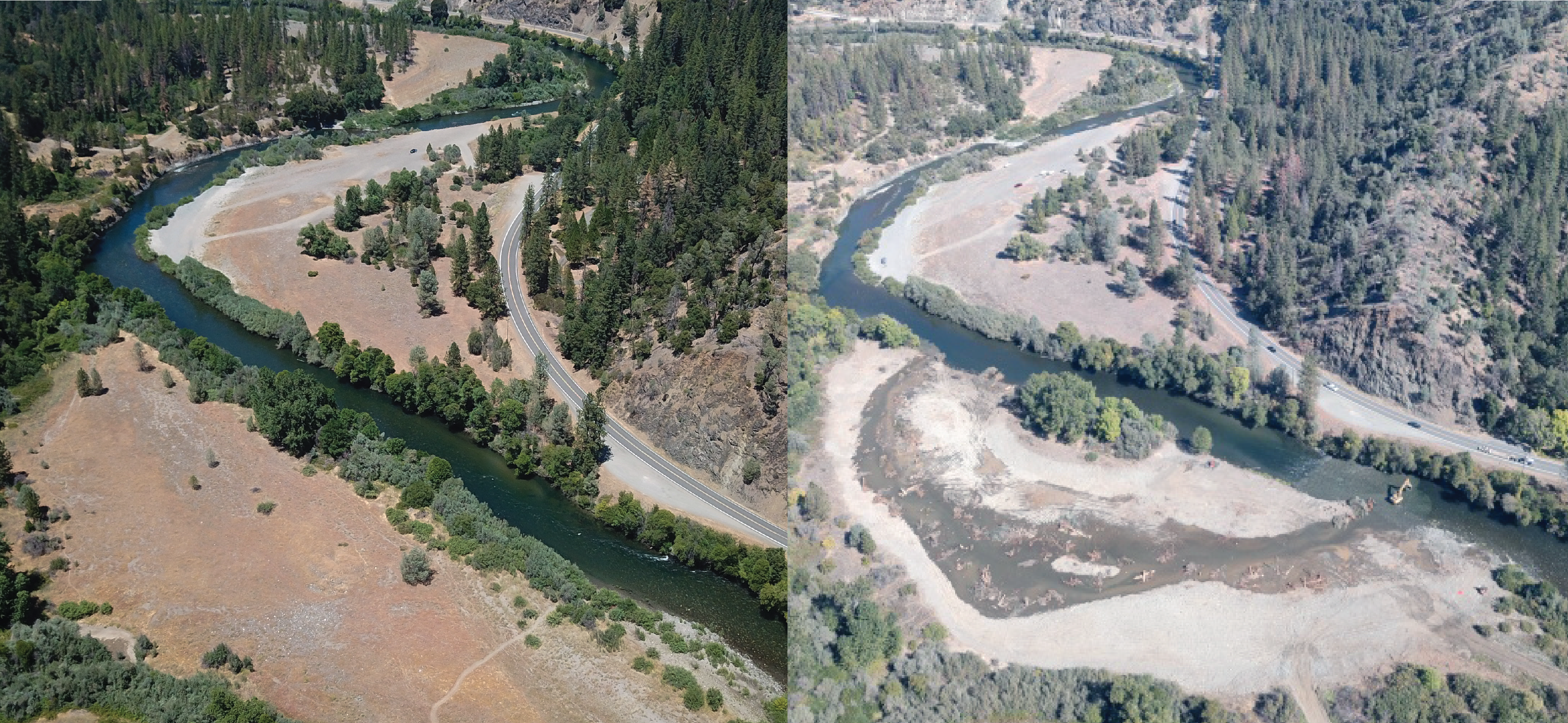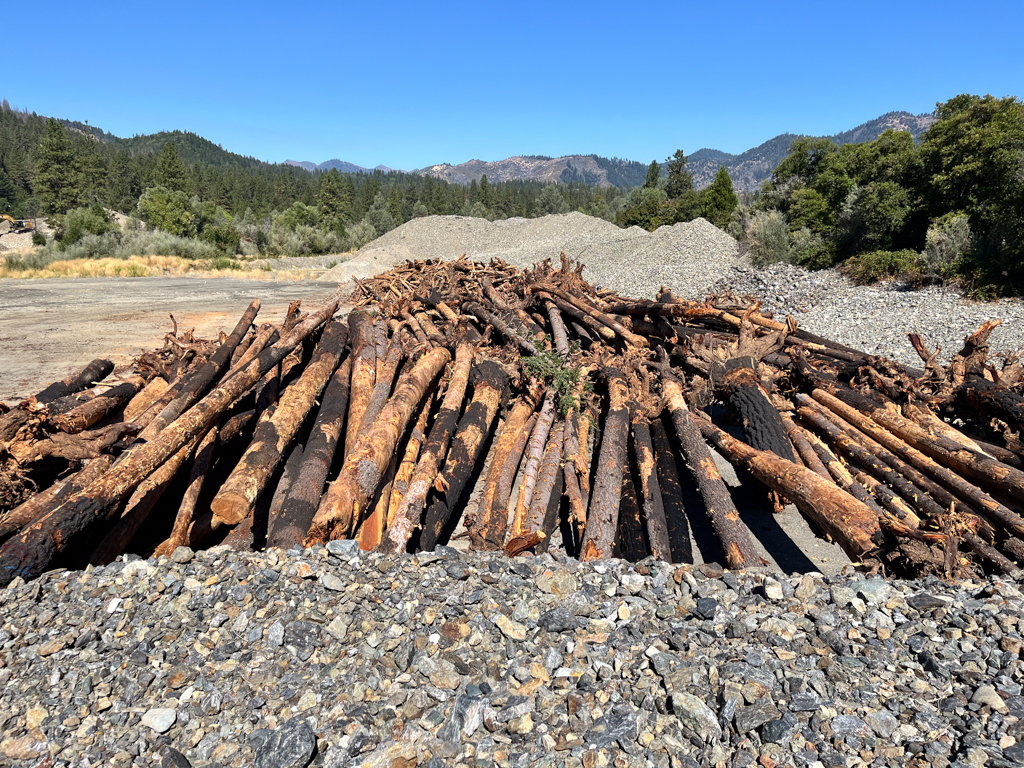Civil construction of the Upper Conner Creek project has wrapped for 2024. Despite the late start, crews from the Yurok Tribe Construction Corporation (YTCC), The Yurok Tribe Fisheries Dept and Hoopa Roads Dept completed the first phase of construction in just under two months. Working exclusively on river left at river mile 78.3 in Junction City, the civil construction crews focused on lowering the 5.7 acre floodplain R1 and creating riffle IC-1.

Before construction, the R1 floodplain was a largely star thistle strewn meadow, which did not fully inundate until flows reached 11,000 cubic feet per second. The Hoopa Valley Tribe’s design team envisioned a lowered surface which targeted many inundation thresholds ranging from 500 to 3500 cubic feet per second. In three weeks time, employing excavators, bulldozers, articulating trucks and front end loaders crews excavated 65,000 cubic yards of earth from the non-functional floodplain to a spoils site further inland. The civil construction team added 300 plus pieces of large wood throughout the floodplain which enables the creation of habitat with a floodplain full of hydraulic diversity.

Constructed of fish rock (5/8-5inches) and oversized sediment (5-12 inches) a riffle at the mouth of the new side channel was enhanced. The feature’s primary function is to add roughness to the river and raise the water surface elevation of the upstream waters to encourage wetting of the newly lowered floodplain on river left. In compliance with the projects permits, the civil construction team monitored water quality during this period of turbidity generation.

As the big yellow trucks demobilize, the revegetation crews start their work. In a temporary nursery onsite an assortment of native grasses, shrubs and trees sit soaking up sun and water while they wait for their turn to be planted. Aiming to wrap up efforts by December, the Hoopa Valley Tribal Fisheries revegetation team’s goal is to have the nursery stock entirely planted in the new floodplain and the spoils area stabilized with native grasses and straw.
As phase one nears completion, the TRRP’s Implementation Branch prepares for phase two. Just downstream, additional floodplains, riffles and improved river access spaces are all on the slate for construction in 2025. The prospect of building new recreational facilities alongside restored riverine habitat is work that we are proud to be part of!
